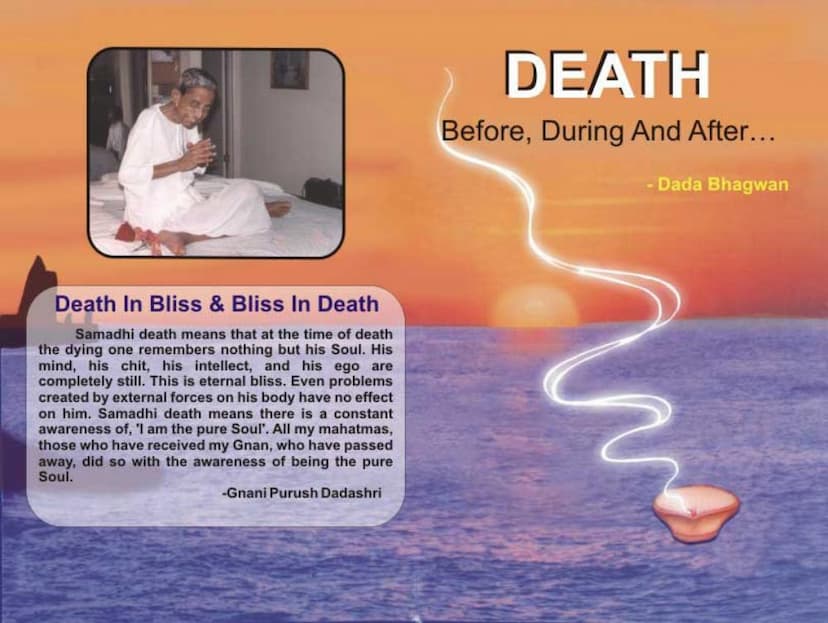Death Before During And After
Added to library: September 1, 2025

Summary
This comprehensive summary of "Death: Before, During and After..." by Dada Bhagwan, published by the Dada Bhagwan Foundation, delves into the Jain perspective on mortality, emphasizing spiritual knowledge and liberation from the cycle of birth and death.
The core message is that the Soul is eternal and unaffected by birth and death. The book argues that the fear of death arises from the ego's identification with the physical body and worldly possessions, rather than the true Self, the Soul. Dada Bhagwan, through his spiritual teachings, aims to guide seekers to realize their true nature as the pure Soul, thereby transcending the fear and suffering associated with death.
Key themes and concepts explored include:
- Samadhi Death: This is described as the ideal death, where the dying person is solely aware of their Soul, with a still mind, intellect, and ego. This state leads to eternal bliss and freedom from worldly suffering.
- The Illusion of Maya: Maya, or illusion, is identified as the force that causes us to take birth, get married, and ultimately die. It makes us forget our true nature as the Soul.
- Life as a Prison: Life is depicted as a prison, with varying degrees of suffering depending on one's state of being (heaven, human, animal, hell). The body is seen as slowly decaying from the moment of birth.
- The Nature of Death: Dada Bhagwan dismisses the concept of "Yamraj" (God of Death), explaining that death is simply the result of the law of karma and destiny. There is no external entity controlling death.
- Karma and Reincarnation: The book elaborates on how actions (karma) in one life determine future births. Positive deeds lead to better rebirths, while negative actions result in lower life forms. The concept of the "balance sheet" of one's life, which is formed prior to death, dictates the next incarnation.
- The Importance of the Human Form: The human birth is considered precious and difficult to attain, offering the unique opportunity for spiritual liberation. It is the only form where one can both create and dissipate karma, and crucially, meet a Gnani Purush (Self-Realized being).
- Akram Vignan: This is presented as a direct, "shortcut" path to Self-Realization, imparted through a scientific process called the Gnan Vidhi. It bypasses the traditional, step-by-step spiritual paths.
- Pratikraman: This is a key practice emphasized for purifying oneself and weakening karmic bonds. It involves confessing mistakes, asking for forgiveness (pratikraman), and resolving not to repeat them (pratyakhyan), with the Divine as a witness.
- Practices During Death and After: The book debunks the efficacy of many traditional rituals performed during and after death, stating that they do not benefit the departed soul. Instead, it emphasizes the importance of maintaining a calm, aware state and sending positive spiritual vibrations through prayer and pratikraman.
- Suicide: Suicide is strongly discouraged, being seen as an act that perpetuates suffering and leads to rebirths in similar circumstances.
- The True Self vs. the Ego: The teachings consistently distinguish between the eternal, pure Soul and the temporary ego. The ego identifies with the body, relationships, and possessions, leading to suffering. The goal is to realize the Soul's true identity.
Ultimately, the book's central message is that true freedom from the cycle of birth and death is achieved through Self-Realization (Atma Gnan), the understanding of one's true nature as the Soul, and living in accordance with the principles of Akram Vignan. By engaging in practices like pratikraman and seeking the guidance of a Gnani Purush, one can overcome the fear of death and attain liberation.